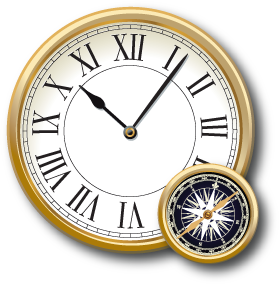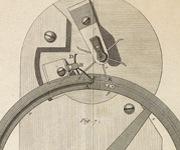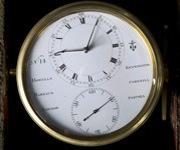Seafaring’s greatest danger was getting lost.
By 1700, finding latitude at sea was routine and fairly accurate.
But finding longitude was mostly guesswork. Astronomers thought the answer to finding longitude lay in observing the skies. Others thought the solution was a good seaworthy clock, but no such clock existed.
After an outpouring of ideas and generations of work, both a good clock and a good sextant for observations were invented. These instruments revolutionized position-finding at sea.













